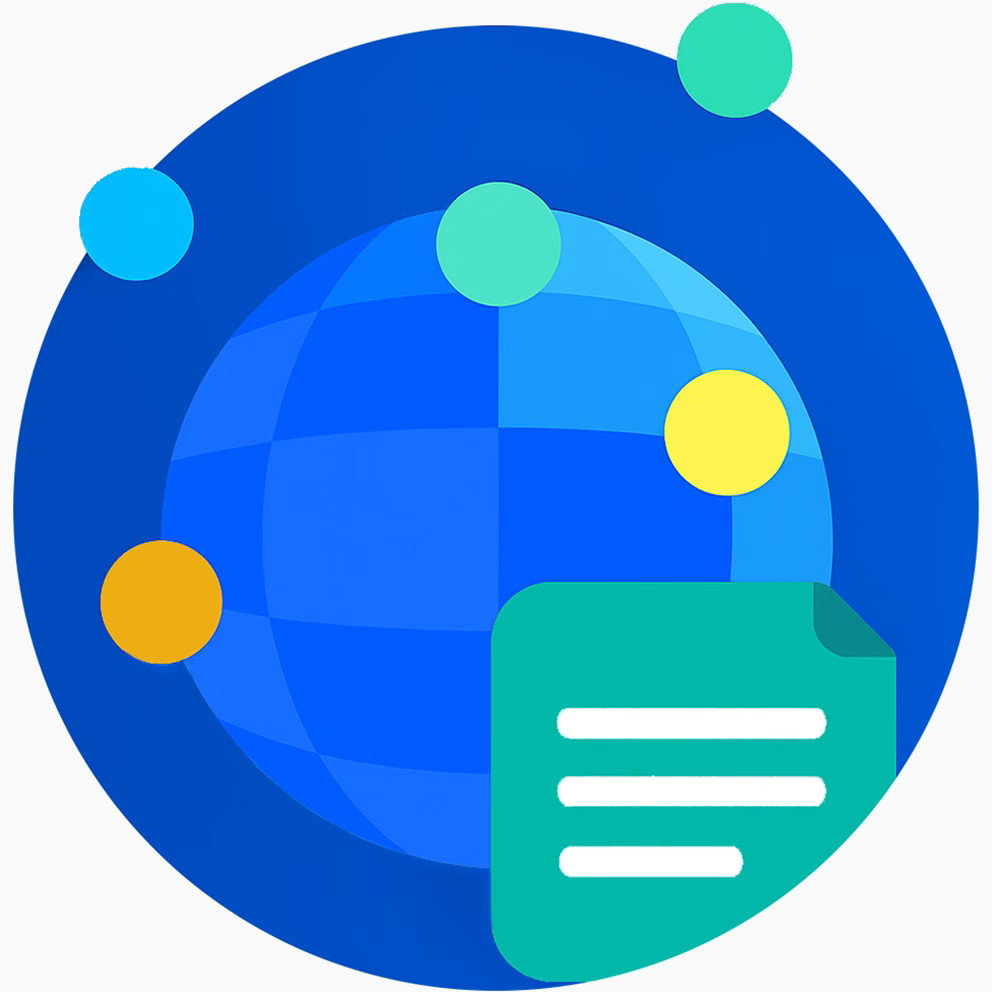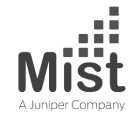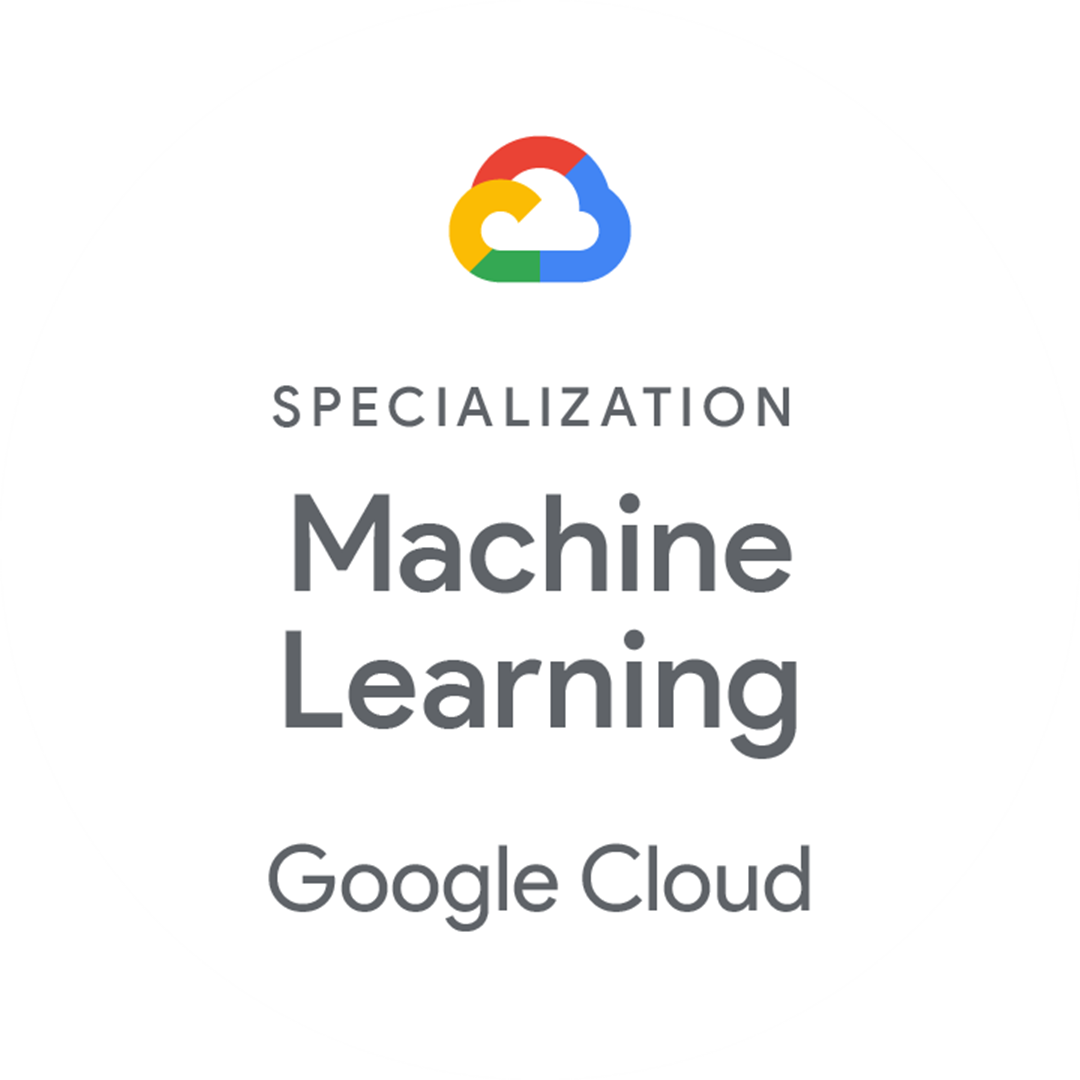We Engineer AI That Ships.
From Model to Market.
50+ AI/ML solutions shipped to production in just 2 years. Not POCs. Not pilots.
Scalable, secure, high-impact AI products — in market, under load, and delivering results.
We Don’t Just Plug in AI. We Engineer Intelligent Systems End-to-End.
At Talentica, we go beyond model integration — we build intelligent systems from the ground up. Our AI-native team brings together GenAI specialists, classical ML experts, and full-stack engineers who deeply understand how to turn AI into actual product outcomes.
We take full ownership of the AI lifecycle — from product engineering and data pipelines to AI architecture and model tuning — ensuring your product isn’t just AI-enabled, but AI-capable and production-ready.
Our strength in classical ML lets us sharpen GenAI outputs for greater accuracy,reliability, and control. Combined with reusable AI prefabs and proven frameworks, we accelerate time-to-impact without compromising quality.
what we offer
We make AI work for you.

AI Agents
Autonomous, accountable and always learning. We build intelligent agents that collaborate, adapt, and execute- at scale and in sync with your business goals.
- Multi-Agents at Scale
- MLOps
- Orchestration AI agents
- Goal-Oriented Task Planning

Vertical LLMs
Your domain is unique, your models should be too. We build vertical LLMs : context-aware, fine-tuned, and scalable, to give your business a strategic edge.
- Fine Tuning
- Pre Training
- Open Source LLMS
- Scale
- Domain Adaptation
Classical ML
Generative AI isn’t always the answer. We apply classical ML where it fits best—delivering explainable, accurate, and production-grade models built to scale with your product.
- Predictive Analytics
- Computer Vision
- Reinforcement Learning
AI-Driven Insights
Data alone doesn’t drive decisions—insights do. We build pipelines, dashboards, and conversational tools — so your teams can act faster and make confident decisions.
- Data pipelines
- Knowl. Graphs
- Anomaly Detection
- Dashboards
- Conversational Data Analytics

AI in Architecture
AI needs the right foundation. We design modular, governed architectures—ready for scale, modernization, and edge deployment to ensure long-term AI success.
- Modernisation
- Edge AI
- Multi- Agents architecture
- Integrations
- Governance

AI in Security
Security shouldn’t wait for an incident. We enhance it with Gen AI or ML— detect threats early, fix vulnerabilities fast, and protect data continuously—at enterprise scale.
- Threat Detection
- CVE fixes
- Privacy preserved AI
- Security Incident Prediction
what we offer
We make AI work for you.

AI Agents
Autonomous, accountable and always learning. We build intelligent agents that collaborate, adapt, and execute- at scale and in sync with your business goals.
- Multi-Agents at Scale
- MLOps
- Orchestration AI agents
- Goal-Oriented Task Planning

Vertical LLMs
Your domain is unique, your models should be too. We build vertical LLMs : context-aware, fine-tuned, and scalable, to give your business a strategic edge.
- Fine Tuning
- Pre Training
- Open Source LLMS
- Scale
- Domain Adaptation
Classical ML
Generative AI isn’t always the answer. We apply classical ML where it fits best—delivering explainable, accurate, and production-grade models built to scale with your product.
- Predictive Analytics
- Computer Vision
- Reinforcement Learning
AI-Driven Insights
Data alone doesn’t drive decisions—insights do. We build pipelines, dashboards, and conversational tools — so your teams can act faster and make confident decisions.
- Data pipelines
- Knowl. Graphs
- Anomaly Detection
- Dashboards
- Conversational Data Analytics

AI in Architecture
AI needs the right foundation. We design modular, governed architectures—ready for scale, modernization, and edge deployment to ensure long-term AI success.
- Modernisation
- Edge AI
- Multi- Agents architecture
- Integrations
- Governance

AI in Security
Security shouldn’t wait for an incident. We enhance it with Gen AI or ML— detect threats early, fix vulnerabilities fast, and protect data continuously—at enterprise scale.
- Threat Detection
- CVE fixes
- Privacy preserved AI
- Security Incident Prediction
Customers who grew with us










OUR WORK IN ACTION
Transforming businesses with AI

Automated Marketing Campaigns with Agentic AI Systems
A marketing startup wanted to build autonomous AI workers to plan, execute, and optimize customer outreach.
Automated Marketing Campaigns with Agentic AI Systems

Background
The marketing startup wants to revolutionize digital marketing with autonomous AI workers who will plan, execute, analyze, and optimize customer outreach.
Challenges
The company aimed to automate the campaign lifecycle and analysis while ensuring seamless metadata extraction and quick access to data.
Solutions
- Developed a flexible foundational model to ensure agents work seamlessly
- Implemented multi-agent collaboration for near-autonomous marketing campaign generation
- Ensured minimal human involvement in campaign creation but kept human-in-the-loop for strategic oversight.
- Built agent-driven campaign performance analysis
- Developed automatic triggers to update or adjust campaign content
Results
- Successfully executed multi-industry campaigns across various formats, such as product launches, flash sales, holiday sales, and other custom campaign types.
- Human-in-the-loop approach helped marketers retain control, provide critical approvals, and align delivery with business objectives.
- Enhanced targeting and continuous optimization boost return on investment.
- Handled increasing volumes of campaigns without additional resources.

Agentic AI-Powered Database Query System for Marketing Solutions
A B2B partner marketing platform needed a natural language chat interface to simplify campaign execution for both technical and non-technical users.
Agentic AI-Powered Database Query System for Marketing Solutions

Background
The company empowers multinational brands to collaborate with retail partners through a secure cloud collaboration platform. With a vast database and plans to run digital marketing campaigns, they needed a natural language chat interface usable by both technical and non-technical users.
Challenges
- Automating banner creation to save time
- Maintaining high accuracy in responses
- Implementing multi-language support
- Preventing AI agents from processing out-of-scope queries
- Routing users inputs smartly based on query type
- Ensuring contextual, domain-specific responses
Solution
- We developed a Banner Resizer & Grader to automate image resizing and quality checks.
- We also built a dual-component system design:
- Insight Builder for indexing sample queries and database schema
- Response Engine for smart routing, translation, and real-time query handling
Results
- 90%+ accuracy in banner evaluation
- 95%+ query response accuracy
- 6,000 tokens saved per interaction on average
- Data privacy assured via Azure OpenAI

Streamlining Business Processes with Autonomous AI
A company aimed to build next generation of business applications that could autonomously perform complex tasks with high accuracy.
Streamlining Business Processes with Autonomous AI

Background
The company wants to build next generation of business applications that could autonomously perform complex tasks with unprecedented accuracy and efficiency.
Challenges
- Handling repeated invoice inflows from multiple vendors (in PDF format) involved tedious reconciliation tasks with database records.
- Managing metadata extraction, knowledge graph construction, and seamless data access
Solutions
- Ensured comprehensive metadata extraction from multiple data sources, including Postgres and MongoDB.
- Developed a sophisticated knowledge graph to identify relationships between entities and support complex query formation.
- Created an LLM-powered chatbot that translates natural language (NL) queries into SQL queries.
- Implemented Trino as the query engine.
- Empowered LLMs to parse PDF documents for tasks
- Ensured agents perform queries and predictions across data platforms to optimize decision-making.
Results
- Accelerated agent development lifecycle, enhancing adaptability to enterprise data needs.
- Automated information extraction, improving efficiency in tasks like invoice reconciliation.
- Improved query accuracy and offered deep insights by revealing entity relationships.
- Enhanced performance by supporting complex cross-database queries.
- Provided real-time insights, supporting better decision-making and predictive analytics.
- Our structured and phased approach led to the successful implementation of a scalable, intelligent data querying solution

Recommendation System (B2Ba)
A curated products online company wanted to increase user engagement.
Recommendation System (B2Ba)

Challenge
A curated products online company wanted to increase user engagement
Solution
Developed a B2B recommendation system to help partners discover vendor products based on their browsing history and metadata in a vendor-partner scenario.
Results
Recommended Top 20 products of interest to the user

Computational Histopathology
A biotech firm wanted to recognize cell shapes and detect cells undergoing mitosis in H&E-stained tissue samples.
Computational Histopathology

Challenge
A biotech firm wanted to recognize cell shapes and detect cells undergoing mitosis in H&E-stained tissue samples.
Solution
Classical image processing was used for cell localization, image transformation and feature extraction. A trained convolutional neural network was used to classify the cell into different classes. However, to detect similar regions in a H&E-stained tissue sample unsupervised approaches were used. Here a neural auto-encoder played the role of an image fingerprinting system.
Results
Accurate identification of mitotic cells and similar tissue regions.

Predicting Viewer Ratings
A TV advertising company wanted to build an in-house rating prediction solution that is comparable with third-party solutions.
Predicting Viewer Ratings

Challenge
A TV advertising company wanted to build an in-house rating prediction solution that is comparable with third-party solutions.
Solution
Developed a deep learning and time-series based ensemble model to predict ratings for different demographics and channels. Trained on data from 7 widely different channels and proven on different snapshots of data.
Results
Performance was more than 50% better than third-party solutions in 70% of cases (channel and snapshots)

Increasing Email Engagement (Multi-modal)
An email marketing platform wanted to boost email engagement using AI-generated images and AI subject line helpers.
Increasing Email Engagement (Multi-modal)

Background
A company in the email marketing domain aimed to boost email engagement using AI-generated images and AI subject line helpers.
Challenges
- Ensuring captivating content and images for increased open rates
- Ensuring authors avoid wasting time due to challenges presented by prompt engineering
- Integrating AI solutions into the existing email creation tool
- Managing communication between email content and AI-based solutions
Solution
- Implemented an AI-based solution for text and image content creation
- Integrated a ChatGPT-based solution that offers AI cards like ‘Proofread,’ ‘Condense,’ ‘Rewrite,’ and more for text-based content creation
- Adopted a two-way communication approach for image generation. Initially, ChatGPT assists in crafting a precise AI image search prompt. This prompt is then utilized to search for images using DALL-E, streamlining the process and reducing the iterations needed to find the perfect image
- Introduced an AI-based subject line helper using ChatGPT. This feature generates subjects based on email content, aiming to enhance the email’s open rate
Results
- Increased email open rates by 7% with engaging subject lines
- High-resolution images resulted in more user responses
- Received great reviews from existing customers, and new customers have also shown interest in the product

Pose and Expression Transfer in Videos (Video)
A platform for video correspondence wanted to use generative technology to map faces and body movement from celebrity clips for immersive visuals.
Pose and Expression Transfer in Videos (Video)

Background
A platform for video correspondence wanted to use generative technology to map facial features and blend body movements from short snippets of celebrity talk shows. The company was aiming for a more realistic and immersive visual experience.
Challenge
- Capturing high-quality footage to authentically mimic facial expressions and body movements
- Generating poses with expressions presents a challenge, and this aspect is currently in the research phase
- Transferring all expressions to an image is difficult with current technology
Solution
- We combined deep learning models with classical computer vision algorithms.
- Implemented a method to refine poses and used advanced technology to transfer facial expressions.
- Finally, upscaled and restored the final output video.
Results
- Generated output resembling a real video
- Moved the solution to production. Currently, it is in the alpha-100 release stage

Creating Support Assistant (Text)
The company providing project flow management software wanted to replace videos and PDFs with an AI chatbot for guiding users through complex Gantt flows.
Creating Support Assistant (Text)

Background
The company provides project flow management software to enhance on-time project delivery. Gantt is a web-based multiuser planning interface, but its complex architecture poses usability challenges, even for experienced users. The company aimed to reduce reliance on videos and PDFs by introducing a chatbot as a guide.
Challenge
- Extracting information from videos and PDFs
- Enabling the chatbot to respond to pertinent questions from the video within 1.5 seconds and summarize the content of the PDF within 9 seconds, all without using a streaming API
- Ensuring consistent answers for semantically similar questions
Solution
- Extracted transcripts from videos and combined them with PDFs to create a knowledge base
- Integrated the knowledge base with the ChatGPT model to answer questions
- Implemented semantic caching and asynchronous generation of answers
Results
- Achieved a 90% accuracy rate in summarizing answers
- Provided correct video URLs over 80% of the time

Domain-Specific LLM Fine-Tuning
A fintech company needed a domain-specific LLM to understand financial jargon, reduce hallucinations, and address privacy issues.
Domain-Specific LLM Fine-Tuning

Challenge
A customer working in the financial domain was struggling with the limitations of pre-trained LLMs. They needed an LLM that could understand industry-specific terminology and reduce hallucinations in its responses. Off-the-shelf models lacked accuracy and raised concerns around privacy and cost.
Solution
Fine-tuned a 0.5B parameter model using QLoRA on a financial statements dataset. Used instruction tuning and multi-shot prompting to improve consistency and reduce hallucinations. Training was done using 4-bit quantization on a T4 GPU via Huggingface and Colab.
Results
- Accuracy improved from 0.43 to 0.70
- Reduced hallucinations and improved domain-specific responses.
- Maintained data privacy by avoiding external API calls
OUR WORK IN ACTION
Transforming businesses with AI

Automated Marketing Campaigns with Agentic AI Systems
A marketing startup wanted to build autonomous AI workers to plan, execute, and optimize customer outreach.
Automated Marketing Campaigns with Agentic AI Systems

Background
The marketing startup wants to revolutionize digital marketing with autonomous AI workers who will plan, execute, analyze, and optimize customer outreach.
Challenges
The company aimed to automate the campaign lifecycle and analysis while ensuring seamless metadata extraction and quick access to data.
Solutions
- Developed a flexible foundational model to ensure agents work seamlessly
- Implemented multi-agent collaboration for near-autonomous marketing campaign generation
- Ensured minimal human involvement in campaign creation but kept human-in-the-loop for strategic oversight.
- Built agent-driven campaign performance analysis
- Developed automatic triggers to update or adjust campaign content
Results
- Successfully executed multi-industry campaigns across various formats, such as product launches, flash sales, holiday sales, and other custom campaign types.
- Human-in-the-loop approach helped marketers retain control, provide critical approvals, and align delivery with business objectives.
- Enhanced targeting and continuous optimization boost return on investment.
- Handled increasing volumes of campaigns without additional resources.

Agentic AI-Powered Database Query System for Marketing Solutions
A B2B partner marketing platform needed a natural language chat interface to simplify campaign execution for both technical and non-technical users.
Agentic AI-Powered Database Query System for Marketing Solutions

Background
The company empowers multinational brands to collaborate with retail partners through a secure cloud collaboration platform. With a vast database and plans to run digital marketing campaigns, they needed a natural language chat interface usable by both technical and non-technical users.
Challenges
- Automating banner creation to save time
- Maintaining high accuracy in responses
- Implementing multi-language support
- Preventing AI agents from processing out-of-scope queries
- Routing users inputs smartly based on query type
- Ensuring contextual, domain-specific responses
Solution
- We developed a Banner Resizer & Grader to automate image resizing and quality checks.
- We also built a dual-component system design:
- Insight Builder for indexing sample queries and database schema
- Response Engine for smart routing, translation, and real-time query handling
Results
- 90%+ accuracy in banner evaluation
- 95%+ query response accuracy
- 6,000 tokens saved per interaction on average
- Data privacy assured via Azure OpenAI

Streamlining Business Processes with Autonomous AI
A company aimed to build next generation of business applications that could autonomously perform complex tasks with high accuracy.
Streamlining Business Processes with Autonomous AI

Background
The company wants to build next generation of business applications that could autonomously perform complex tasks with unprecedented accuracy and efficiency.
Challenges
- Handling repeated invoice inflows from multiple vendors (in PDF format) involved tedious reconciliation tasks with database records.
- Managing metadata extraction, knowledge graph construction, and seamless data access
Solutions
- Ensured comprehensive metadata extraction from multiple data sources, including Postgres and MongoDB.
- Developed a sophisticated knowledge graph to identify relationships between entities and support complex query formation.
- Created an LLM-powered chatbot that translates natural language (NL) queries into SQL queries.
- Implemented Trino as the query engine.
- Empowered LLMs to parse PDF documents for tasks
- Ensured agents perform queries and predictions across data platforms to optimize decision-making.
Results
- Accelerated agent development lifecycle, enhancing adaptability to enterprise data needs.
- Automated information extraction, improving efficiency in tasks like invoice reconciliation.
- Improved query accuracy and offered deep insights by revealing entity relationships.
- Enhanced performance by supporting complex cross-database queries.
- Provided real-time insights, supporting better decision-making and predictive analytics.
- Our structured and phased approach led to the successful implementation of a scalable, intelligent data querying solution

Recommendation System (B2Ba)
A curated products online company wanted to increase user engagement.
Recommendation System (B2Ba)

Challenge
A curated products online company wanted to increase user engagement
Solution
Developed a B2B recommendation system to help partners discover vendor products based on their browsing history and metadata in a vendor-partner scenario.
Results
Recommended Top 20 products of interest to the user

Computational Histopathology
A biotech firm wanted to recognize cell shapes and detect cells undergoing mitosis in H&E-stained tissue samples.
Computational Histopathology

Challenge
A biotech firm wanted to recognize cell shapes and detect cells undergoing mitosis in H&E-stained tissue samples.
Solution
Classical image processing was used for cell localization, image transformation and feature extraction. A trained convolutional neural network was used to classify the cell into different classes. However, to detect similar regions in a H&E-stained tissue sample unsupervised approaches were used. Here a neural auto-encoder played the role of an image fingerprinting system.
Results
Accurate identification of mitotic cells and similar tissue regions.

Predicting Viewer Ratings
A TV advertising company wanted to build an in-house rating prediction solution that is comparable with third-party solutions.
Predicting Viewer Ratings

Challenge
A TV advertising company wanted to build an in-house rating prediction solution that is comparable with third-party solutions.
Solution
Developed a deep learning and time-series based ensemble model to predict ratings for different demographics and channels. Trained on data from 7 widely different channels and proven on different snapshots of data.
Results
Performance was more than 50% better than third-party solutions in 70% of cases (channel and snapshots)

Increasing Email Engagement (Multi-modal)
An email marketing platform wanted to boost email engagement using AI-generated images and AI subject line helpers.
Increasing Email Engagement (Multi-modal)

Background
A company in the email marketing domain aimed to boost email engagement using AI-generated images and AI subject line helpers.
Challenges
- Ensuring captivating content and images for increased open rates
- Ensuring authors avoid wasting time due to challenges presented by prompt engineering
- Integrating AI solutions into the existing email creation tool
- Managing communication between email content and AI-based solutions
Solution
- Implemented an AI-based solution for text and image content creation
- Integrated a ChatGPT-based solution that offers AI cards like ‘Proofread,’ ‘Condense,’ ‘Rewrite,’ and more for text-based content creation
- Adopted a two-way communication approach for image generation. Initially, ChatGPT assists in crafting a precise AI image search prompt. This prompt is then utilized to search for images using DALL-E, streamlining the process and reducing the iterations needed to find the perfect image
- Introduced an AI-based subject line helper using ChatGPT. This feature generates subjects based on email content, aiming to enhance the email’s open rate
Results
- Increased email open rates by 7% with engaging subject lines
- High-resolution images resulted in more user responses
- Received great reviews from existing customers, and new customers have also shown interest in the product

Pose and Expression Transfer in Videos (Video)
A platform for video correspondence wanted to use generative technology to map faces and body movement from celebrity clips for immersive visuals.
Pose and Expression Transfer in Videos (Video)

Background
A platform for video correspondence wanted to use generative technology to map facial features and blend body movements from short snippets of celebrity talk shows. The company was aiming for a more realistic and immersive visual experience.
Challenge
- Capturing high-quality footage to authentically mimic facial expressions and body movements
- Generating poses with expressions presents a challenge, and this aspect is currently in the research phase
- Transferring all expressions to an image is difficult with current technology
Solution
- We combined deep learning models with classical computer vision algorithms.
- Implemented a method to refine poses and used advanced technology to transfer facial expressions.
- Finally, upscaled and restored the final output video.
Results
- Generated output resembling a real video
- Moved the solution to production. Currently, it is in the alpha-100 release stage

Creating Support Assistant (Text)
The company providing project flow management software wanted to replace videos and PDFs with an AI chatbot for guiding users through complex Gantt flows.
Creating Support Assistant (Text)

Background
The company provides project flow management software to enhance on-time project delivery. Gantt is a web-based multiuser planning interface, but its complex architecture poses usability challenges, even for experienced users. The company aimed to reduce reliance on videos and PDFs by introducing a chatbot as a guide.
Challenge
- Extracting information from videos and PDFs
- Enabling the chatbot to respond to pertinent questions from the video within 1.5 seconds and summarize the content of the PDF within 9 seconds, all without using a streaming API
- Ensuring consistent answers for semantically similar questions
Solution
- Extracted transcripts from videos and combined them with PDFs to create a knowledge base
- Integrated the knowledge base with the ChatGPT model to answer questions
- Implemented semantic caching and asynchronous generation of answers
Results
- Achieved a 90% accuracy rate in summarizing answers
- Provided correct video URLs over 80% of the time

Domain-Specific LLM Fine-Tuning
A fintech company needed a domain-specific LLM to understand financial jargon, reduce hallucinations, and address privacy issues.
Domain-Specific LLM Fine-Tuning

Challenge
A customer working in the financial domain was struggling with the limitations of pre-trained LLMs. They needed an LLM that could understand industry-specific terminology and reduce hallucinations in its responses. Off-the-shelf models lacked accuracy and raised concerns around privacy and cost.
Solution
Fine-tuned a 0.5B parameter model using QLoRA on a financial statements dataset. Used instruction tuning and multi-shot prompting to improve consistency and reduce hallucinations. Training was done using 4-bit quantization on a T4 GPU via Huggingface and Colab.
Results
- Accuracy improved from 0.43 to 0.70
- Reduced hallucinations and improved domain-specific responses.
- Maintained data privacy by avoiding external API calls
Our Partners



Customer Speak

“What I like most about Talentica is their ability to solve tough, cutting-edge problems with skilled engineers who are proactive and committed. They’ve consistently delivered high-quality products on tight timelines, making them a reliable partner for building innovative solutions from the ground up.”

“For an early-stage startup like ours, Talentica understood what we thought about user needs and the problems we were trying to solve. They imbibed our vision and helped us design and build a product that will sell and get to the market successfully. They brought expertise in emerging technologies like artificial intelligence and blockchain to enable innovation for us.”

“With Talentica, you get your engineering solution in one place. You can depend on them as you would depend on a family member. It allows you to be confident that all your engineering team needs will be met and grow in one space as opposed to trying to find them (solutions) with individual services or individual skill sets of people from the outside.”
Meet Our AI Expert
ABHISHEK GUPTA
Principal Data Scientist & Head of Data Science
Alumnus of IISc Bangalore and IIT Varanasi
Abhishek brings 10+ years of expertise in generative AI, NLP, mathematical optimization, and video recognition and pattern recognition algorithms to help startups and tech companies build production-grade AI products.

DIG DEEPER
Insights from our AI ecosystem
Will Agentic AI Replace or Reinvent SaaS?
Alakh Sharma, Senior Data Scientist
Will Agentic AI Replace or Reinvent SaaS?
FAQs
It depends on your AI readiness. Approximately 85% of AI and ML models fail due to a lack of technical expertise, the absence of the right tech team, ill-defined user personas, a mismatch between vision and product, misguided expectations, and many other reasons. You can avoid all these issues by starting your implementation plans with an AI implementation checklist. Drawing from our experience of building over 40 production-ready AI models, we have created a comprehensive checklist for you. Download it to review and enhance your plans accordingly.
We have deployed more than 40 AI models across industries. The list includes
- Image processing models for a healthcare startup
- Video generation models for marketing platforms
- Chatbots (RAG-enabled, assistants, and others) for industries like recruitment, IT, and security companies
- Predictive analytics models for IT, healthcare, RealTech, and FinTech companies
- Generative AI models for RealTech, FinTech, IT, marketing, and other industries
- Automated workflow management for a marketing company
Multiple factors can impact the cost of AI development services. The project’s complexity is a big challenge as the complication of the algorithms can drive the costs high by demanding more resources and time. Sophisticated models also require more support in terms of GPUs and cloud services.
A lack of data can also impact, as building the right data pipeline is a costly affair. Deciding between LLMs and classical models is another. LLMs are cheaper, but they can trigger privacy issues. In addition, LLM cost is incremental, and it increases with the number of users. Integration with the existing system, deployment, and maintenance of the model can also influence the overall cost.
The timeline for AI development projects varies based on type and complexity. Building a helpdesk or assistant and RAG pipeline can take at least 2 months while automating workflows can take at least a year.
The AI development team structure varies according to the product stage and project complexity. At a bare minimum, a Data Scientist can manage the Proof of Concept (POC) stage. For MVP development, a team comprising a Data Scientist and a Backend Engineer is necessary. For full product development, the team should include a Data Scientist, a Backend Engineer, a DevOps Engineer, and a CloudOps Engineer. Additionally, there may be a need for UX/UI Designers and QA Experts to ensure a seamless user experience and robust product quality.
Our approach is mostly requirement-driven. However, some questions fit most GenAI development processes and help decide the approach. Here they are-
- How crucial is data privacy?
- What is the breakeven point for Open AI services and open-source models?
- If OpenAI is the platform, then at what rate requests come?
- What is the cloud environment we are using?
- Are we okay with not having real-time responses?
- Can we have open-source models with their own GPUs?
- Do we have to generate pure images?
- Do we have to use Llama models or Anthropic?
For effective generative AI implementation, always onboard product engineers with experience in Large Language Models (LLM), Prompt engineering, Agents, and Data Science.
We have deployed more than 15 AI models across industries. The list includes
- Image processing models for a marketing platform
- Audio generation models for entertainment and animation companies
- Video generation models for a marketing platform
- Chatbots (RAG-enabled, assistants, and others) for industries like recruitment, IT, and security companies
- Info extraction models for analytics, retail, and e-commerce companies
- Automated workflow management for a marketing company
Generative AI has proven its capabilities in terms of improving productivity, managing workflow, and optimizing resource utilization. However, its proper impact depends on four major factors.
- ROI—GenAI pilots should establish clear success criteria before launch, focusing on measurable outcomes in two key areas: enhancing customer experience and reducing unit costs. This will help close the gap between their promise and reality.
- Data privacy—Security is still a big concern for many companies, particularly tech giants, as they want to prevent data breaches at all costs.
- Performance quality and response time- Sometimes, these two factors can adversely affect each other. For instance, while GPT-4o delivers results faster than GPT-4, the quality may be inferior. Prioritizing requirements based on the use case is absolutely necessary.
- Human supervision is required to ensure accuracy, ethical compliance, and quality control.
The ideal team composition for a generative AI project includes
- Project Manager to oversee timelines and coordinate efforts
- Data Scientists to manage data acquisition and preprocessing.
- Machine Learning Engineers implement and optimize the models
- DevOps Engineers handle deployment and maintenance
- UX/UI Designers focus on user-friendly interfaces
- QA Engineers validate the software’s performance and reliability
- Ethics and Compliance Officers ensure adherence to ethical standards,
This comprehensive team structure can ensure the successful development, deployment, and maintenance of generative AI projects.
Implementing machine learning can help your business by improving decision-making, increasing efficiency, automating processes, and uncovering valuable insights from data. We have identified a faster method by initially leveraging LLMs to understand their scope and potential solutions. Subsequently, if there is a need, we transition to pure machine learning, which, although more time and resource-intensive, offers robust and precise results.
We have deployed around 30 models across industries. Some of these projects are-
- Reinforcement learning model for a mobile advertising company
- Predictive analytics model for real estate, wireless network, TV advertising and email marketing platforms
- Deep learning model to build a domain-specific Q&A system for a channel marketing company
- Image processing technology for a biotech startup
- Assistants for a recruitment platform
Developers with a good knowledge of either statistics or mathematics and Machine Learning Algorithms can build successful models. Expertise in Data Science is always a plus.
There are four main steps: business understanding, data acquisition, model development, and deployment. However, using LLMs can reduce cycle time by speeding up business understanding and data acquisition.
The required timeline in a machine learning development project is problem-specific and depends heavily on complexity. A simple project can be completed in 2 to 4 months, whereas a pure ML project with a high level of complexity may take 8 to 18 months to complete.


